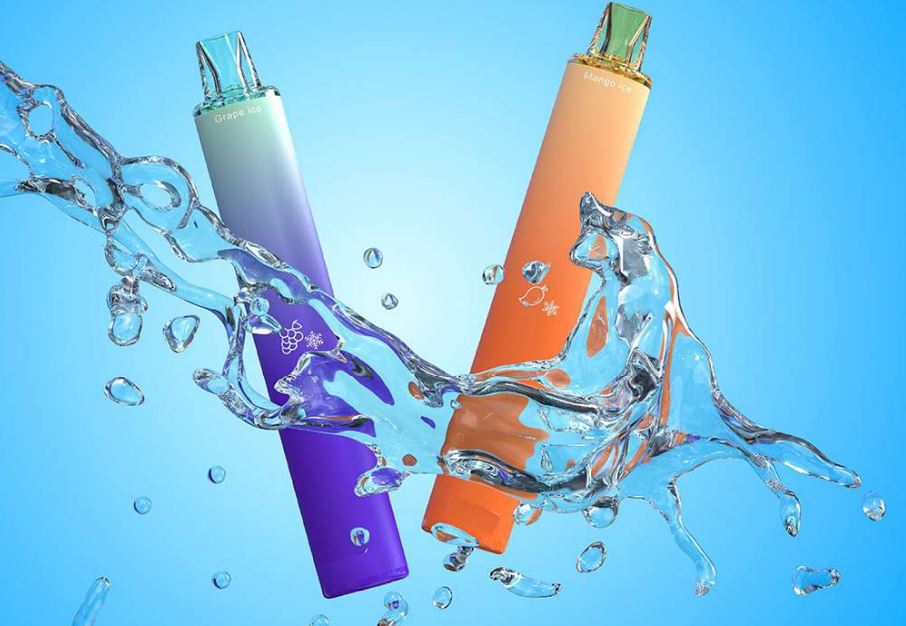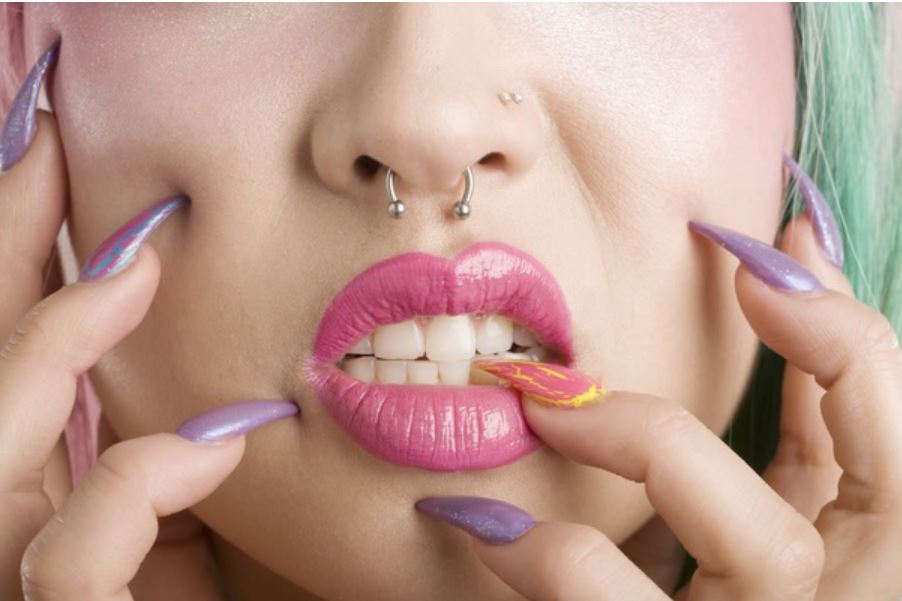Sponsor Ads
Non-China Vape, 510 Cartridges & Battery Device Maker
If you are going for a vape manufacturer out of China we are you best choice. We offer a alternative vape production location with a very competitive price. You can save money by buying directly from us the manufacturer, without any middlemen or extra fees. You can also enjoy discounts for bulk orders and special offers for long term & loyal customers.
We offer small trial orders where you can test the quality and performance of the products before placing a large order. Fast shipping and cheaper shipping cost from Malaysia and Singapore ports. You don't have to wait long to receive your products.
Contact Us!
Contribute for our website Maintenance! We want to keep it free for all visitors.
Trending Best Sellers
How to Change Nose Rings
Trending Best SellersHow to change nose ring s one of the most commonly asked question accordingly to APP (Association for Professional Piercers). Especially when is comes to those nose rings which has round shape, bending and screws.
Before you learn you learn about method on how to change nose ring you need to know some basic about piercing's hygiene.
Things you need to know before Changing Your Jewelry
Cleaning Solutions
Packaged sterile saline (with no additives, read the label) is a gentle choice for piercing aftercare. If sterile saline is not available in your region a sea salt solution mixture can be a viable alternative. Dissolve 1/8 to 1/4 teaspoon (.75 to 1.42 grams) of non-iodized (iodine-free) sea salt into one cup (8 oz / 250 ml) of warm distilled or bottled water. A stronger mixture is not better; a saline solution that is too strong can irritate the piercing.
Cleaning Instructions for Piercings
WASH your hands thoroughly prior to cleaning or touching your piercing for any reason.
SALINE rinse as needed during healing. For certain placements it may be easier to apply using clean gauze saturated with saline solution. A brief rinse afterward will remove any residue.
If your piercer suggests using soap, gently lather around the piercing and rinse as needed. Avoid using harsh soaps, or soaps with dyes, fragrances, or triclosan.
RINSE thoroughly to remove all traces of the soap from the piercing. It is not necessary to rotate the jewelry through the piercing.
DRY by gently patting with clean, disposable paper products because cloth towels can harbor bacteria and snag on jewelry, causing injury.
What is Normal?
• Initially: some bleeding, localized swelling, tenderness, or bruising.
• During healing: some discoloration, itching, secretion of a whitish-yellow fluid (not pus) that will form some crust on the jewelry. The tissue may tighten around the jewelry as it heals.
• Once healed: the jewelry may not move freely in the piercing; do not force it. If you fail to include cleaning your piercing as part of your daily hygiene routine, normal but smelly bodily secretions may accumulate.
• A piercing may seem healed before the healing process is complete. This is because tissue heals from the outside in, and although it feels fine, the interior remains fragile. Be patient, and keep cleaning throughout the entire healing period.
• Even healed piercings can shrink or close in minutes after having been there for years! This varies from person to person; if you like your piercing, keep jewelry in—do not leave it empty.
What To Do
• Wash your hands prior to touching the piercing; leave it alone except when cleaning. During healing, it is not necessary to rotate your jewelry.
HINTS AND TIPS
Jewelry
• Unless there is a problem with the size, style, or material of the initial jewelry, leave it in the place for the entire healing period. See a qualified piercer to perform any jewelry change that becomes necessary during healing. See the APP website to locate an APP member, or to request a copy of our Picking Your Piercer brochure.)
• Contact your piercer if your jewelry must be removed (such as for a medical procedure). There are non-metallic jewelry alternatives available.
• Leave jewelry in at all times. Even old or well-healed piercing can shrink or close in minutes even after having been there for years. If removed, re-insertion can be difficult or impossible.
• With clean hands or paper product, be sure to regularly check threaded ends on your jewelry for tightness. ("Righty-tighty, lefty-loosey.")
• Should you decide you no longer want the piercing, simply remove the jewelry (or have a professional piercer remove it) and continue cleaning the piercing until the hole closes. In most cases only a small mark will remain.
• In the event an infection is suspected, quality jewelry or an inert alternative should be left in place to allow for drainage of the infection. If the jewelry is removed, the surface cells can close up, which can seal the infection inside the piercing channel and result in an abscess. Do not remove jewelry unless instructed to by a medical professional.
Source: APP Association for Professional Piercers
How to Change Nose Ring Hoop
To put in a nose ring hoop into your nose piercing takes careful maneuvering, but with a little practice, you can get used to the process. The method will vary depending on the type of nose jewelry you choose, but you should pull the ring apart gently and reattach with ease by using a bead, segment or pushing the ends together. Just make sure that you disinfected ring and wash your hands thoroughly before handling it. Also, make sure your piercing is healed and which usually takes around 3 to 6 months or more.
Captive Hoop Nose Rings
A captive hoop nose ring is distinguished by its style wherein a bead is attached in between the ends of the semi-circle shaped ring in order to hold it in place. The following are steps on how to put it on: Click here How to change nose rings Captive Hoop.
Seamless Hoop Nose Rings
Unlike captive nose rings, seamless rings do not have beads. They are attached through a split in the ring. Here are steps on how to correctly put on this hoop nose ring: Click here how to change nose ring Seamless Hoop.
Segment Hoop Nose Rings
A segment nose ring is style by putting a segment portion on the other end of the ring. This segment is being held in place by prongs and pressure. Below are the different steps on how to put this nose ring style on: Click here how to change nose rings Segment Hoop
Comments
What you think?
Recent Articles
-
Riche Niche: Health | Lifestyle | Fashion | Marketing | Technology
Mar 14, 25 09:18 AM
Our Riche Niche blog is the easiest way to stay up-to-date with the latest news, trends and articles published on this site. -
The Therapeutic Potential of Medical Cannabis Vaporization
Aug 05, 24 09:32 PM
The use of medical cannabis has been a subject of much debate and research over the years. With the growing acceptance of cannabis for medical purposes, various methods of administration have been exp… -
Amazon Spring Sale: A Season of Spectacular Savings
Mar 18, 24 08:38 AM
Amazon Spring Sale: A Season of Spectacular Savings -
Understanding Nose Piercing Types: A Guide for Teens
Mar 16, 24 09:19 AM
Explore the rising trend of nose piercings among teenagers, understanding the various types and their cultural implications for a stylish appeal. -
Infected Nose Piercing
Mar 16, 24 09:18 AM
You can expect symptoms of infected nose piercing to resemble any other kind of body piercing infection. -
EMS manufacturing services in Malaysia
Mar 09, 24 10:33 PM
Malaysia is one of the leading countries in Southeast Asia that offers EMS manufacturing services to both local and international clients. -
Laundry Business: The Need for Payment System Upgrades
Mar 08, 24 11:14 AM
Discover the benefits of upgrading your laundry business's payment system. Enhance efficiency, increase profits, and improve customer convenience. -
Nose Peircing Store
Feb 18, 24 02:38 AM
A collection of latest at our nose peircing store. -
How to Choose the Right Coffee Maker for Your Needs
Feb 18, 24 02:12 AM
We'll compare the pros and cons of four common types of coffee makers: drip, French press, espresso, and vacuum. We'll also give you some tips on how to choose the right one based on your preferences… -
Emulate Celebrities with Nose Piercings
Feb 06, 24 08:13 AM
Discover the celebrities with nose piercing and get inspired for your next piercing! From studs to septum rings, our list has it all. Read more! -
Types of Nose Rings
Feb 06, 24 08:11 AM
Types of Nose Rings -
Is my nose piercing ring is sinking in?
Feb 06, 24 08:10 AM
Is my nose piercing ring is sinking in? Or just swollen? -
Dry Herb Vape Pens-Discover the Advantages of Malaysian Made
Feb 04, 24 12:39 PM
Choose our non-China dry herb vape pen for its high production standards, strict quality control, and excellent craftsmanship. -
Trinity Nose Ring A Unique Fashion Statement
Feb 03, 24 08:36 PM
Explore the world of trinity nose rings, a unique piece of jewelry that adds elegance and style to your look. Understand the different types and choose the right one for you. -
Redefining Beauty: The Rise of Nose Piercing Trend in the USA
Feb 02, 24 08:34 AM
Explore the evolution of the nose piercing trend in the USA, from ancient tradition to modern expression of individuality.













